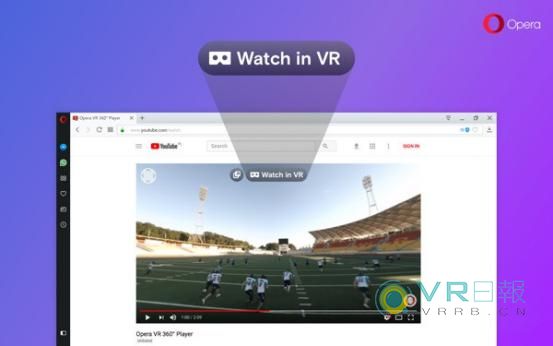
For OpenVR-compatible heads, such as Oculus Rift and HTC Vive, viewing and watching 360 videos is now as easy as wearing a VR headset. This is all thanks to Opera's latest version of the developer's browser, which plays 360-degree video with a built-in VR player. The company also said it plans to support the full agreement of WebVR in the future.
Now, video streaming giants like YouTube, Vimeo and Facebook all support local 360-degree video formats and provide more 360 ​​content than ever before. For VR headset users, while browsing the web, they can also quickly view 360-degree video in VR and these experiences are seamlessly connected.
Opera VR Browser supports instant VR video playback including 360, 180 and standard video formats, including most streaming media services such as YouTube, Facebook and Vimeo.
The latest Opera Developer browser automatically detects your VR heads through OpenVR. Steam's API allows multiple VR heads to be attached to Steam content. From the user's perspective, all you have to do is navigate to the 360 ​​video and press the "VR mode" button.
WebVR is a program that transfers JavaScript and WebGL-constructed content to VR heads and integrates a variety of available input devices, such as tracking motion controllers. Its mission is essentially to make the network a viable platform for carrying lightweight VR content. You can surf as easily as any 2D web page.
The team behind Opera stated that 360 playback for VR headshots is just "the first step in a fully immersive and compatible VR experience on a web browser." There are currently several PCs and mobile browsers that support local WebVR, including Mozilla VR, Chrome for Android, Microsoft Edge, Chromium, Samsung Galaxy for GearVR, Servo for Oculus Carmel and Mozilla, etc.; all of which enable users to play without Web-based games and experiences that need to be officially downloaded.